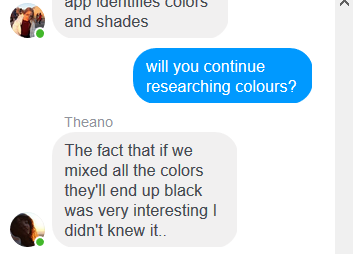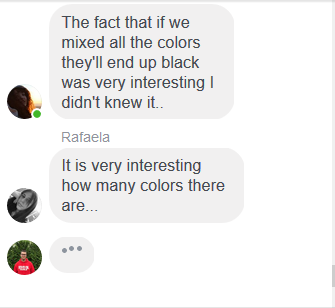General Info
The objective of this Learning Scenario is to create bridges between Art and Science under the prism of everyday experience. Henri Matisse was a painter who revolutionized painting at the beginning of the 20th century by breaking the rules of the way colours were used. Actually, he was the only artist Pablo Picasso recognize as equal and was inspired by. The chosen painting (the Woman with a Hat) made a huge impression because of its use of colours, which was totally unconventional at the time. Our students are asked to combine colours every day, in the way they are dressed, their room decoration, their makeup, their homework etc. It is thus interesting to know how colours are supposed to be combined and how they can break the rules if they want to. Moreover, they encounter an old acquaintance, Isaac Newton, who was the first scientist to depict the colours of the rainbow on a tangible wheel, which is still contemporary and has been updated by many more scientists throughout the centuries. The notion that the light is white and it contains a spectrum of different colours, whereas, when these colours are put on paper and mixed, they produce the black colour, gives us a sense of harmony and cohesion. Therefore, science and art, not only provide pleasure and knowledge, a perspective of inquiry and critical thinking, but, most importantly, they relate to our sense of aesthetics, which after all, defines our identity.
Audience and Educational Framework
Educational Details
- Stage 1: Engage: Colours in our lives (time: 20’)
A. The students are asked to observe and discuss orally in pairs or small groups the colours of their clothes, how they combined them, why and if they like these combinations. The springboard of the Learning Scenario is their own experiences so that all students are able to relate to the topic.
B. The students are shown the Matisse’s drawing “Woman with a hat” on the class projector and are asked the following driving questions:
- How are colours used in this painting?
- Do you like the way they are combined?
- Why is this painting considered to be revolutionary?
Then they take notes on their Learning Diaries (either digitally on a tool such as Adobe spark or on a notebook) they watch the video1 and try to guess the topic of this learning scenario, which relates to the ways colours are classified and combined in our everyday life, in art and in science.
- Stage 2:A. Explore and Explain: Experimenting with Matisse’s colours
(time: 45’ )
“All the colors sing together; their strength is determined by the needs of the chorus. It’s like a musical chord.”
The students are given this quote by Matisse and are asked to discuss it, divided in 4 groups. Then, in these groups, the students choose one resource and create a short presentation (3-4 slides) about the way Matisse used colours and his life and work. Depending on their different language level and whether they adopt mostly a visual or auditory learning style, they choose an article or a video. Then they share their findings with the rest of the class.
The fact that Matisse made a breakthrough in the way he used colours is featured during these presentations.
The resources to be used at this stage:
B. Explore and Explain : Learning about Newton’s Colour Wheel (time: 45’)
The 4 groups continue their exploration about what a Colour Wheel is. As Tate Gallery’s curator Matthew Gale, explains: “As Newton found, when all colours are brought together in light you get white - but when all colours are brought together in paint you get black.”
The questions to be inquired by the 4 groups are: What is a colour wheel? What does it show? How does it work? When was it first created? By whom? Again they work in 4 groups, as in task 2A, differentiating the content they choose and the way they decide to present it, according to their learning styles.
- Stage 3: A. Elaborate: Playing with the Colour Wheel (time: 45’)
Time to play and do some hands-on activities while deepening and extending the students’ knowledge. The 4 groups experiment with colour wheels. First they see how a tangible colour wheel can be made and then they study more information and go for a virtual one.
B. Elaborate: Decoding Matisse's Color (time: 45’)
After becoming familiar with the Colour wheel and its uses, the 4 groups visit the Europeana digital gallery of Matisse’s paintings, they download one of his paintings that they like (always with respect to the Licences provided by the aggregators) and they use the Canva tool (color palette generator)to find the colour palette it belongs to and to generate their own colour palettes.
C. Elaborate: Creating your own design (time: 45’)
In the end, they apply the new knowledge using this canva tool (100 color combinations). They create a poster of a woman with a hat after choosing a colour palette. While working they keep updating their Learning Diaries, with their observations, thoughts, comments, possible questions.
They create a virtual museum posting their posters-painting with the Sway tool
- Stage 4: A. Evaluate: reflect on the topic (time: 45’)
The students in the 4 groups compare each other’s portrait to Matisse’s original painting “Woman with a hat”. To be able to make this comparison they watch this video first and this article secondly, about Matisse’s colours and the use of the colour wheel. Then they discuss and record their findings on their Learning Diaries. They present their findings in class.
B. Evaluate: reflect on the process of group work (time: 30’)
They use a rubric to reflect and evaluate on the way that the groups worked, using their notes in their Learning Diaries too.
- To learn what a colour wheel is
- To learn how colours are categorized
- To learn how artists and specifically Henry Matisse used colours and revolutionized their use
- To be able to identify colour palettes
- To be able to use colour palettes to produce their own designs
- To be able to enjoy colour harmony in their everyday life
- To be able to use free web tools such as canva to produce their own designs, integrating different colour palettes
- To appreciate art
https://www.canva.com/colors/color-wheel/
https://www.royalacademy.org.uk/article/family-how-to-make-a-colour-wheel-1
https://www.europeana.eu/en/collections/
https://musings-on-art.org/matisse-henri-decoding-his-color
https://www.canva.com/colors/color-palette-generator/
https://www.canva.com/learn/100-color-combinations/
http://www.readwritethink.org/files/resources/lesson_images/lesson819/GroupWorkRubricsChecklists.pdf
Implementation
(where and how the practice was implemented)
The scenario was implemented digitally, during the first lockdown period, in Greece. The Greek Ministry of Education is providing us with a tool (Webex) to conduct webinars with our students, but we are not allowed to record them or take pictures. The time is really sensitive and we don’t want to put pressure on parents and children. Moreover, some students do not have a steady internet connection, a PC or laptop, and they access the meetings only with their mobile phones, which limits the range of activities they can participate in. All these limitations led us to implement the scenario in a way that would be rather different from the actual class. Therefore some student comments are included in my entry. There is always room for improvement, by expanding our research (in the after-lockdown era) in more detail, expanding in more painters (eg the impressionists), in more fields (eg fashion and decoration), or in more aspects regarding the nature of light itself, in science. It is highly recommended that this learning scenario is applied collaboratively (among teachers as well as students) and in an interdisciplinary way.



Educational material/resources (file/URL) accompanying the practice
English
| Attachment | Size |
|---|---|
| worksheet Wheel of Colours.pdf | 1.59 MB |
English